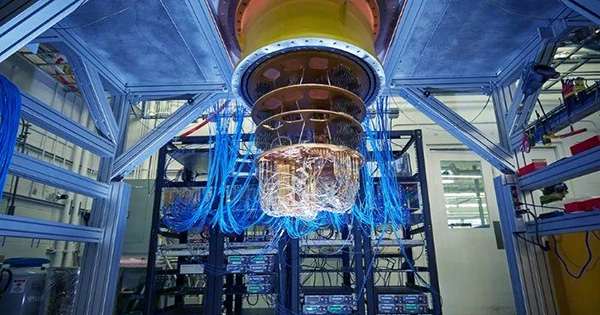Quantum computers will transform the way computers function since they are far quicker than our existing systems. We do not yet have a quantum computer, but numerous prototypes are on their way and can accomplish some amazing things. According to a recent study published in Nature, this includes forming new phases of matter, such as a time crystal.
Let us start with an explanation of how a quantum computer operates. Quantum bits, also known as qubits, are bits made up of zeros and ones that harness the power of quantum physics. They may exist in superposition and entangled, both of which are quantum features that allow for extremely rapid calculations. Computations get increasingly quicker when more qubits are linked together.
The problem is that quantum systems are frequently fragile. They must preserve at very low temperatures, in a vacuum, and so on. These circumstances are not ideal for a portable quantum computer, but they are perfect for studying strange phases of matter. This is when the time crystal enters the picture. A regular crystal is a collection of particles (molecules, atoms, and so on) that have a repeating spatial structure. The structure of a time crystal is similar, but it does not repeat in space. It repeats itself repeatedly.
They have just lately discovered, and there is still a lot we do not know about them. To make a time crystal, this latest method employs Google’s Sycamore quantum computing technology. “The larger picture is that we’re thinking of the devices that will be the quantum computers of the future as complicated quantum systems in and of themselves,” said Matteo Ippoliti, a postdoctoral fellow at Stanford and co-lead author of the paper. “Instead of calculation, we’re using the computer to create and detect new phases of matter as a new experimental platform.”
A time crystal varies with time, yet it always returns to the same precise form. Because the system’s entropy remains constant and no energy is gained or lost, a perfect time crystal is predicted to persist perpetually. The time crystal could only be detected for a few hundred cycles since quantum devices are imperfect. However, using new protocols and simulations, the team was able to investigate its features, which not only educated them about time crystals but also revealed significant insights into quantum computers.
Roderich Moessner, the co-author of the article and head of the Max Planck Institute for Physics of Complex Systems, remarked, “We succeeded to exploit the quantum computer’s adaptability to help us understand its own constraints.” “It effectively informed us how to adjust for its own faults, allowing us to determine the fingerprint of optimal time-crystalline behavior from finite time observations.” This is a remarkable breakthrough. Quantum computers may be crucial in answering some of science’s most pressing issues due to their processing capability, but they may also be able to answer some questions just by being quantum devices.















